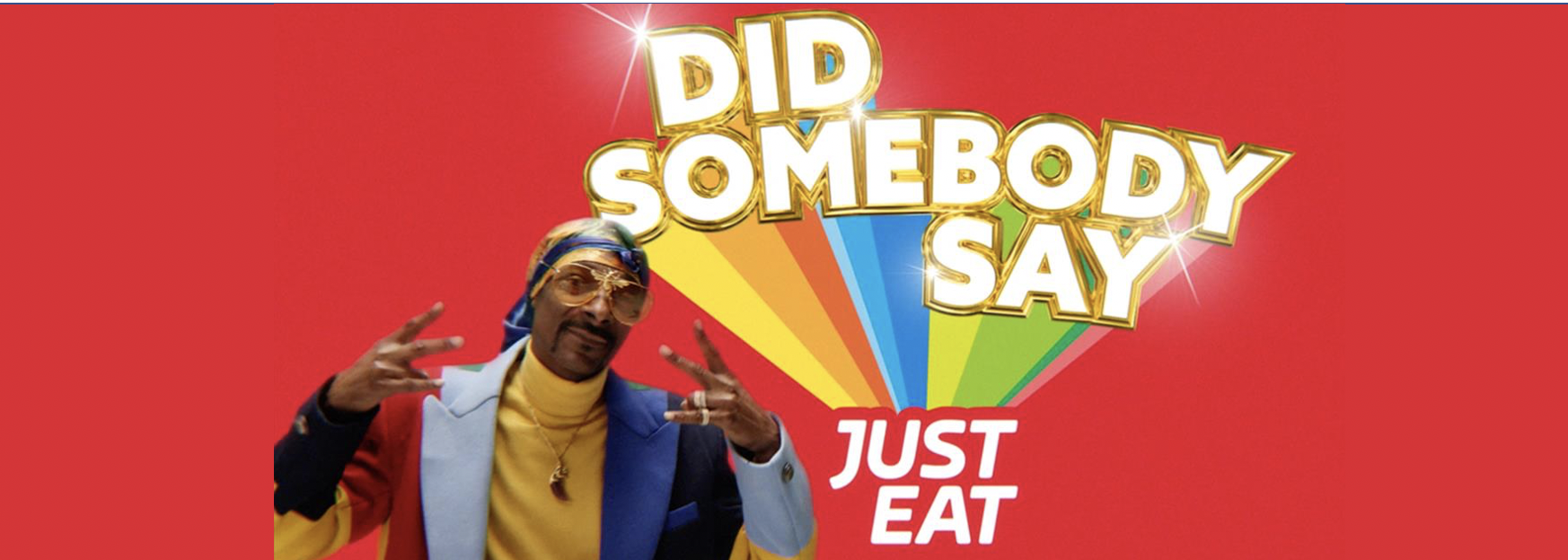Just Eat, the take-away food delivery group, has grown strongly during our crazy Covid times: 2020 first half revenues of $1.2 billion were up +44% vs. year ago (1). The UK Marketing Director, Matt Bushby, shared great insights on how the brand has kept delivering growth in an interview with the IAB’s James Chandler during today’s Festival of Marketing (2).
In this post, we summarise the key learnings using the ‘ABCD’ of Covid-era marketing introduced in a previous post here.
Agile: adjust to rapid and sudden changes in both the demand and supply sides
Matt explained the need to rapidly change marketing plans in response to March’s lockdown. In particular, a major marketing campaign featuring rapper Snoop Dogg was put on hold. The light hearted tone of the campaign didn’t feel right for the times. Also, many restaurants who provide the food that Just Eat deliver were forced to close, limiting supply.
Just Eat quickly changed tack and used their core business to help ‘ease the pain’ for people, an approach we recommended in this post back in May. £11million of donations were made to struggling restaurants and £3mill was invested to give 20,000 NHS staff 25% off their food orders. This action-focused approach had several advantages over yet another black and white, slow motion film saluting key workers:
– Brings to life the brand purpose of ‘Delivering joy’
– Focuses on Just Eat’s core business: what they do best
– Actively engages and involves employees
– Drives trial of the core product
– Helps protect the supply chain for when demand picks up
The brand has also been pro-active in proposing new products to respond to changing needs. One example was helping Indian restaurants meet the need for lighter lunch options by ‘re-purposing’ food they already sold, such as creating Chicken tikka wraps.
Business focused: solve real-life business issues to sell more stuff (SMS) and/or cut costs
Just Eat’s marketing team worked with the business as a whole to responded to changes in consumer behaviour. For example, demand on Sundays dropped, given a lack of live sport and also less boozy Saturday nights out on the town! On the other hand, demand at breakfast and lunchtime increased. And dinner orders were happening earlier as people didn’t have to commute home.
The brand’s marketing evolved to reflect these changes but Matt’s team also needed to work with operational teams to cope with the changes in demand, by adjusting the staffing of customer help lines and call centres, for example. The team also needed to work quickly on protocols for contact-free delivery, and communicate these changes to the thousands of couriers who work for Just Eat.
Consumer closeness: regular and rapid insight to stay on top of changes in attitudes
Matt explained how the marketing team have done “2 years learning in 6 months”. In particular, the staggering 1million data points a day from different sources has been a rich source of insight to keep up with changing attitudes and needs.
One fascinating insight was how people were compensating for canceled summer holidays abroad by experimenting with different types of cuisine, such as Thai, Greek and Turkish food. I love how this example of insight blends sales data with an awareness of what’s happening in broader culture.
Digital transformation: drive growth through digital channels
Matt shared some great insights into how Just Eat has harnessed digital channels. One example was the Snoop Dogg campaign mentioned earlier, which the brand finally launched in May. By this time restaurants were back up and running and consumer sentiment measurement suggested that “the time was right for some light-heartedness via the wonderful world of food,” according to CMO Susan O’Brien (3). This is great example of how brands have a role not just to ease the pain but also to entertain.
The Snoop campaign had an important TV component (below), with the rapper sharing his love for “oodles of noodles” and ordering “tacos to the chateau”. Matt explained how Just Eat still see this channel as having an important role, providing ‘sofa moments’ where people can enjoy content together.
The brand then make smart use of digital channels to amplify the hell out of the creative assets from the TV ad. The campaign “comes with social-savvy methods of connecting with a younger audience – including collaborations with TikTok influencers, the launch of Instagram stickers and singalong karaoke,” reports Campaign (3). The brand also worked with video game platform Twitch, to tap into the massive increase in video gaming during the last few months, a prime time for ordering food delivery.
In conclusion, Just Eat is a great example of how brands can deliver growth in today’s times, with an agile response to evolving consumer needs that solves real business issues and harnesses the power of digital channels.
We explore brand growth in depth on our brandgym Mastering Brand Growth program on our brandgym Academy platform. If you’d like more info on the program, simply pop your name and email in the form below (we’ll also send you the weekly brandgym blog email and brandgym Academy news, but you can opt out at any time).
For more on brand growth, see this other post.
Sources:
